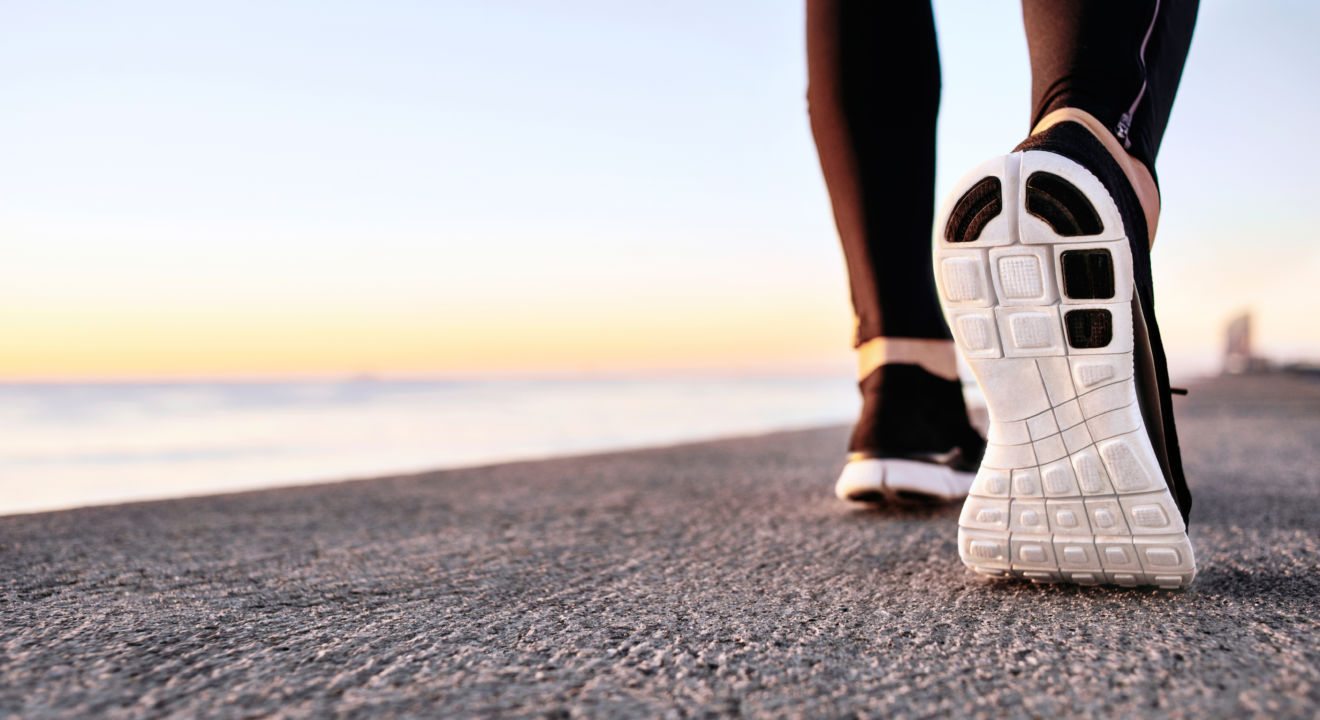Relationships November 13, 2016


Walking for 30 minutes every day is great. Tracking your daily steps to reach a goal of 10,000 is even better. But if you’re a woman who loves taking a stroll around the neighborhood, there are simple changes you can make to boost your walking game to make it more stimulating.
While it’s no secret that brisk walking is beneficial for your health, this underrated exercise has many diverse perks when done right. And the great thing about walking is that it’s accessible to almost everyone. You don’t need special equipment or attire other than comfortable shoes.
If you’re not a fan of running, weightlifting or other activities that involves strenuous cardio, walking can be enough to help reduce and treat chronic illnesses or just improve your overall health, says The New York Times.
Here are some valuable tips that will not only spruce up your daily routine but will also help maximize the benefits.
READ MORE: How to Not Skip Your After-Work Workout
Although it can be argued that walking is as simple as putting one foot in front of the other, in order to lose weight and get the most out of your walk, you have to focus on the rest of your body.
According to Real Simple, walking the “right way” involves your posture, arms and feet. Certified group fitness instructor Michele Stanten says your spine should be straight, your ears over your shoulders and your hips over your knees.
And as silly as it may have looked, all those movies showing women with bent arms and matching jumpsuits were onto something. Stanten also says that your arms should be at a 90 degree angle and should swing back and forth. “Your legs will naturally move in sync, so the faster you swing, the faster you’ll walk,” Stanten adds.
As for your feet? You should land heel first with each step and then roll through the foot and push off with your toes. Start practicing your stride!
Depending on your schedule, make sure you walk before or after dinner (or both) to promote healthy metabolic activity.
Walking 20 minutes before the evening meal is scientifically proven to decrease your appetite and aid in losing weight, says the Health Site. The University of Glasgow in Scotland found that walking before dinner helps improve your metabolism by increasing your body temperature and decreasing your appetite. (If you’re a diabetic, however, don’t walk on an empty stomach, says the Health Site.)
On the other hand, walking 15 minutes after a meal can rev up your metabolism and burn off the calories you just ate, says Livestrong. And walking at this time can also contribute to muscle and heart health. However, make sure not to engage in a brisk walk after a heavy meal since exercising while trying to digest food can force the heart to perform at twice the normal rate. Wait to walk about 45 minutes to an hour after big meals, advises Livestrong.
READ MORE: Best Workouts You Can Do at the Beach
There are obvious perks to being outside, including fresh air, sunshine and serenity. Getting off the treadmill and into the outdoors can help your overall health. According to a study published in the journal “Health and Place,” connecting with the green and blue space outside can boost your mood, improve your health and help you deal with chronic illness during old age.
Additionally, basking in the sunlight as you walk changes the levels of nitric oxide (NO) in your blood. When NO is decreased in your body, your blood pressure will also decrease. “Your skin is the storehouse of nitric acid and when exposed to sunlight, [it] causes the release of NO from the skin to circulate in the blood,” says the Health Site.
Yes, plain ole walking is good for you, but switching up the tempo by sporadically walking faster and then slower will help you maximize the benefits. Having short, high-intensity spurts during your walk will help you lose weight faster and minimize your workout time. And if you really want to pump up the results, carry weights. Or if you prefer, you can add intensity by walking on a hill or just using the stairs at home.
Really, it just matters that you get out there and move. Walking is good for people who are recovering from an injury or are starting a workout regimen. As Hippocrates once said, “Walking is man’s best medicine.”
Aside from physical health benefits to walking – like losing weight – taking a stroll is known to benefit your memory, reduce the risk of cancer and protect from heart disease. But not only that, walking can also be more pleasurable, especially when done with a friend.
READ MORE: Think Your Way to the Fountain of Youth